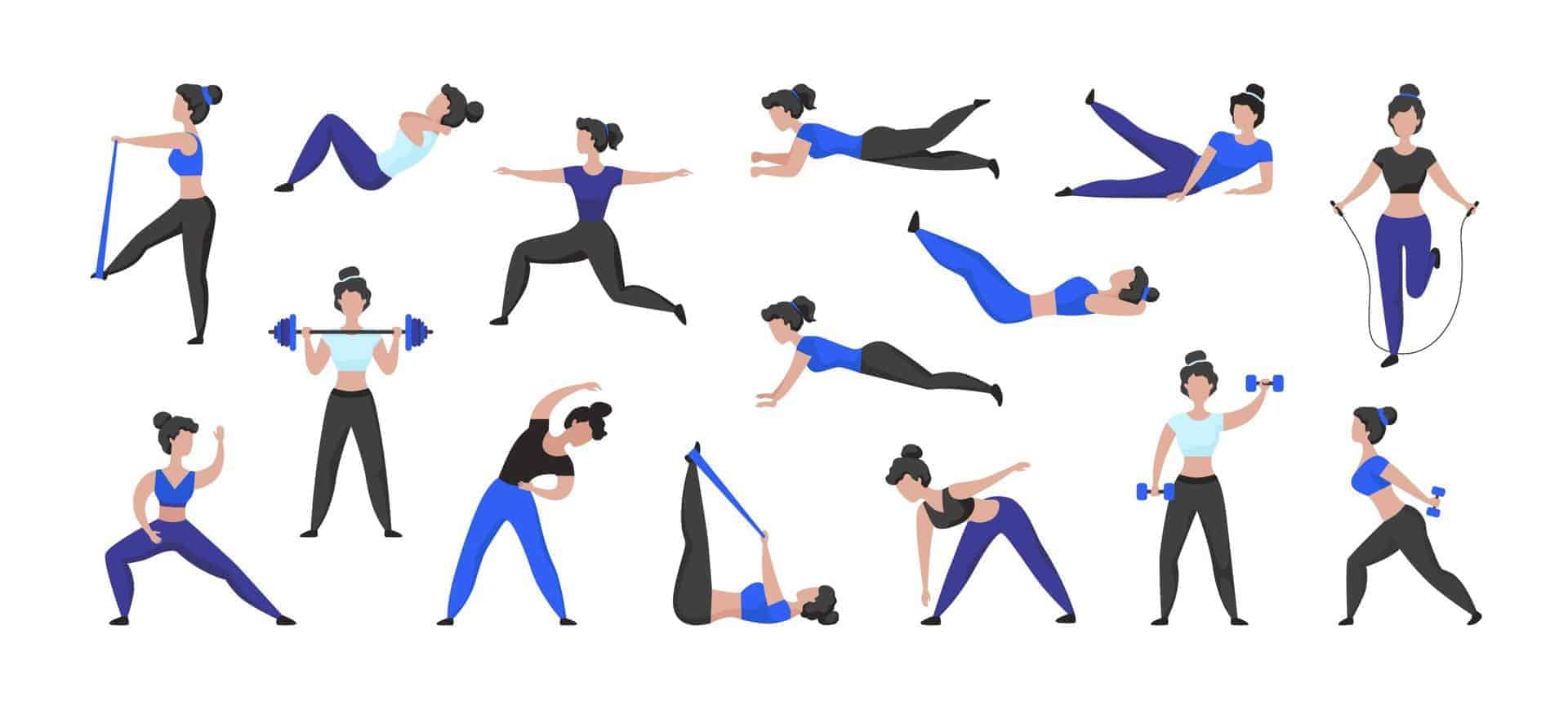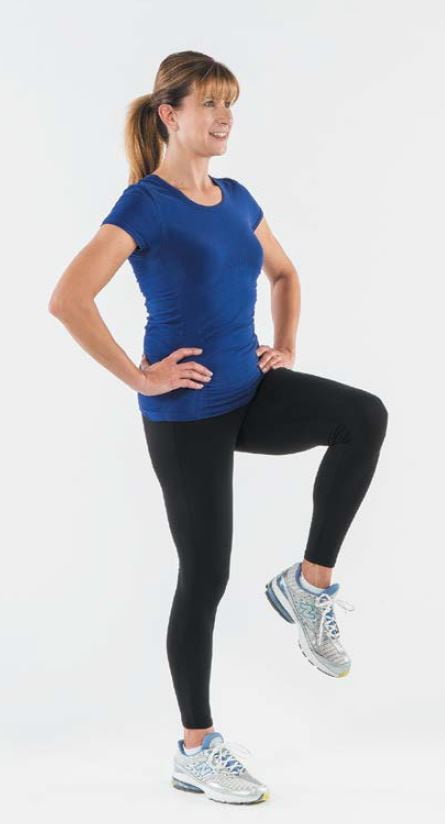The 5 types of physical fitness exercises include aerobic, strength training, flexibility, balance, and functional movements. These exercises target different aspects of fitness and contribute to overall health and wellness.
Physical fitness is an essential aspect of leading a healthy lifestyle. Regular exercise not only helps in maintaining a healthy weight but also improves cardiovascular health builds muscle strength, enhances flexibility and balance, and allows for functional movement. However, understanding the different types of physical fitness exercises is crucial to ensure a well-rounded workout routine.
By incorporating a variety of exercises into your fitness regimen, you can effectively target different areas of your body and improve overall fitness levels. We will explore the five primary types of physical fitness exercises, providing insight into their benefits and how they contribute to a healthier, fitter you.
Benefits Of Physical Fitness Exercises
Physical fitness exercises encompass five main types, including aerobic, strength, flexibility, balance, and endurance. Engaging in these diverse exercises offers numerous benefits, such as improving heart health, muscle strength, flexibility, coordination, and overall stamina. Incorporating a variety of physical fitness exercises into your routine helps promote holistic well-being and enhances overall health.
Improves Overall Health
Regular physical fitness exercises have numerous benefits for overall health. Engaging in activities like cardiovascular exercises, strength training, and flexibility exercises can significantly improve your well-being. These exercises enhance the functioning of various body systems, including the cardiovascular, respiratory, and muscular systems. They help to maintain a healthy weight, reduce the risk of chronic diseases, and improve mental health.
Increases Energy Levels
Physical fitness exercises play a vital role in boosting energy levels. Regular physical activity increases blood flow and oxygen supply throughout the body, resulting in greater overall energy. Additionally, exercises release endorphins, which are natural mood-lifters, and help combat fatigue. By incorporating physical fitness exercises into your routine, you can experience increased stamina, improved productivity, and a greater sense of vitality. 🌟 Benefits of Physical Fitness: – Improves overall health – Increases energy levels When it comes to physical fitness exercises, they are not just about looking good; they offer a multitude of benefits to your overall well-being. Let’s dive deeper into two significant advantages: improving overall health and increasing energy levels. 🌱 Improves overall health ([source](source-url)) Regular physical fitness exercises have numerous benefits for overall health. Engaging in activities like cardiovascular exercises, strength training, and flexibility exercises can significantly improve your well-being. These exercises enhance the functioning of various body systems, including the cardiovascular, respiratory, and muscular systems. They help to maintain a healthy weight, reduce the risk of chronic diseases, and improve mental health. 🌟 Key benefits of improving overall health are
1. Healthy weight maintenance: Physical fitness exercises help to prevent weight gain and promote weight loss, making it easier to maintain a healthy body weight.
2. Reduced risk of chronic diseases: Regular exercise reduces the risk of chronic conditions such as heart disease, diabetes, and certain cancers.
3. Improved cardiovascular health: Physical activities that increase heart rate, like jogging or swimming, strengthen the heart, lower blood pressure, and improve circulation.
4. Enhanced respiratory function: Exercises that improve fitness levels lead to increased lung capacity and improved oxygen uptake.
5. Better mental health: Physical fitness exercises promote the release of endorphins, reducing stress, anxiety, and symptoms of depression.
Regular physical activity increases blood flow and oxygen supply throughout the body, resulting in greater overall energy. Additionally, exercises release endorphins, which are natural mood-lifters, and help combat fatigue. By incorporating physical fitness exercises into your routine, you can experience increased stamina, improved productivity, and a greater sense of vitality.
🌟 Key benefits of increasing energy levels are:
1. Improved stamina: Engaging in physical fitness exercises regularly enhances stamina, allowing you to perform daily activities with less fatigue.
2. Enhanced productivity: Increased energy levels aid in concentration and focus, allowing you to be more productive in your work and daily tasks.
3. Enhanced mood: Regular physical activity stimulates the release of endorphins, which create feelings of happiness and reduce stress and anxiety.
4. Reduced fatigue: Engaging in physical fitness exercises reduces fatigue and boosts overall vitality by improving blood flow and oxygen supply to the body.
5. Better sleep quality: Regular exercise promotes better sleep patterns, leading to improved sleep duration and quality. In conclusion, physical fitness exercises offer significant advantages, including improved overall health and increased energy levels.
By incorporating these exercises into your daily routine, you can enhance your well-being and experience a greater sense of vitality. So why wait? Start reaping the benefits of physical fitness today!

Credit: m.youtube.com
Cardiovascular Fitness
Cardiovascular fitness, also known as aerobic fitness, refers to the ability of the heart and lungs to supply oxygen-rich blood to the working muscle tissues and the ability of the muscles to use oxygen to produce energy for movement. This type of fitness is important for overall health and well-being as it helps to improve heart and lung function, enhances endurance, and reduces the risk of cardiovascular diseases.
Definition And Importance
Cardiovascular fitness is essential for maintaining a healthy heart and efficiently transporting oxygen throughout the body. It is crucial for reducing the risk of heart disease and improving overall physical endurance. Engaging in activities that boost cardiovascular fitness can also enhance stamina and energy levels, allowing individuals to perform daily tasks with ease.
Examples Of Exercises
Effective cardiovascular fitness exercises include:
- Running
- Cycling
- Rowing
- Jumping rope
- Swimming
Strength Training
Strength training is a type of physical fitness exercise that helps in building muscular strength and endurance. It involves using resistance, such as weights or resistance bands, to challenge your muscles and improve their ability to generate force. This form of exercise is vital for maintaining overall health and is especially beneficial for individuals looking to increase muscle mass, enhance athletic performance, or support weight loss goals. By incorporating strength training into your fitness routine, you can achieve a wide range of physical and mental health benefits.
Definition Of Strength Training
Strength training, also known as resistance training, is a form of exercise that stimulates the muscular system to exert force against an external resistance. This resistance can be provided by free weights, weight machines, resistance bands, or even bodyweight exercises. The goal of strength training is to increase muscle strength, endurance, and mass through repetitive and progressive resistance movements.
Importance Of Strength Training
Strength training plays a crucial role in overall physical fitness. It not only helps in developing strong and toned muscles but also offers numerous health benefits. Here are some reasons why strength training is important:
- Enhances Muscle Strength: Regular strength training exercises help to increase the strength and power of your muscles. This is particularly important as we age, as it can help prevent muscle loss and maintain our ability to perform daily activities with ease.
- Improves Bone Health: Strength training promotes bone density and reduces the risk of osteoporosis, a condition characterized by weak and brittle bones. By putting stress on the bones during resistance exercises, your body adapts and strengthens the skeletal system.
- Boosts Metabolism: Strength training helps to increase your metabolic rate, allowing your body to burn more calories throughout the day. This can be particularly beneficial for individuals trying to lose weight or maintain a healthy body composition.
- Enhances Functional Fitness: Strong muscles are essential for performing everyday tasks, such as lifting heavy objects, climbing stairs, or carrying groceries. By improving muscle strength through strength training, you can enhance your overall functional fitness and make daily activities easier.
- Supports Joint Health and Injury Prevention: By strengthening the muscles surrounding your joints, strength training can help improve joint stability and reduce the risk of injuries. It can also alleviate joint pain and discomfort associated with conditions like osteoarthritis.
Examples Of Strength Training Exercises
Various types of strength training exercises target different muscle groups. Here are some examples:
| Exercise Type | Muscle Group | Example Exercises |
|---|---|---|
| Chest | Pectorals | Bench press, push-ups, dumbbell flyes |
| Back | Latissimus dorsi, rhomboids | Deadlifts, pull-ups, rows |
| Legs | Quadriceps, hamstrings | Squats, lunges, leg press |
| Shoulders | Deltoids | Shoulder press, lateral raises, upright rows |
| Arms | Biceps, triceps | Bicep curls, tricep dips, hammer curls |
| Core | Abdominals, obliques | Plank, Russian twists, bicycle crunches |
These are just a few examples of strength training exercises. Incorporating a combination of exercises that target different muscle groups into your fitness routine will ensure a well-rounded and effective strength training program.

Credit: azwellmed.com
Flexibility Exercises
Flexibility exercises are an essential part of physical fitness. They help improve joint mobility and muscle flexibility, preventing injury and enhancing overall performance. The five types of physical fitness exercises include static stretching, dynamic stretching, yoga, Pilates, and tai chi.
Definition And Importance
Flexibility exercises are physical activities that focus on stretching and improving the range of motion of muscles and joints. These exercises enhance flexibility, which is essential for maintaining good posture, preventing injuries, and performing everyday tasks with ease. Flexibility exercises improve the overall function and mobility of the body, allowing for better coordination and balance. They also help relieve muscle tension and promote relaxation.
Examples Of Exercises
There are various flexibility exercises that target different muscle groups and body parts. Here are some examples:
1. Shoulder Stretch: Stand tall with your feet shoulder-width apart. Extend one arm across your chest, placing the opposite hand on your elbow. Gently pull the extended arm towards your body until you feel a stretch in the shoulder. Hold the stretch for 15-30 seconds and repeat on the other side.
2. Hamstring Stretch: Sit on the floor with one leg extended and the other bent with the foot flat on the floor. Lean forward from your hips, reaching towards your extended leg. Keep your back straight and your toes flexed. Hold the stretch for 15-30 seconds and switch sides.
3. Quad Stretch: Stand tall, holding onto a wall or chair for support if necessary. Bend one knee, bringing your heel towards your buttocks. Grab your ankle with your hand and gently pull it closer to your body. Keep your knees close together throughout the stretch. Hold for 15-30 seconds and repeat on the other side.
4. Trunk Rotation: Stand with your feet shoulder-width apart. Place your hands on your hips and slowly rotate your upper body to the right, keeping your hips facing forward. Hold for a few seconds and return to the starting position. Repeat on the left side. Continue alternating for a total of 10-15 rotations.
5. Spinal Stretch: Sit on the floor with your legs extended in front of you. Bend your right knee and place your right foot outside your left thigh. Twist your upper body to the right, placing your left elbow on the outside of your right knee. Gently press your elbow against your knee to deepen the stretch. Hold for 15-30 seconds and switch sides.
By incorporating these flexibility exercises into your fitness routine, you can improve your overall flexibility and range of motion. Remember to warm up before stretching and never push yourself beyond your comfort level. It’s important to perform these exercises regularly for optimal results.

Credit: www.healthline.com
Conclusion
Incorporating these 5 types of physical fitness exercises into your routine can significantly improve your overall well-being. By focusing on cardiovascular, strength, flexibility, balance, and endurance exercises, you can achieve a holistic approach to fitness. Consistent dedication to these exercises will lead to improved health, increased energy, and a better quality of life.
Start incorporating these exercises and experience the transformative benefits for yourself.
